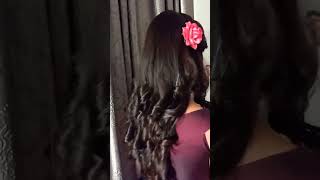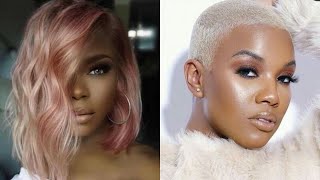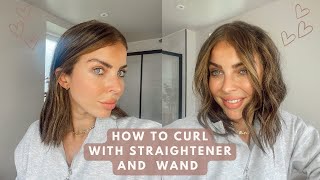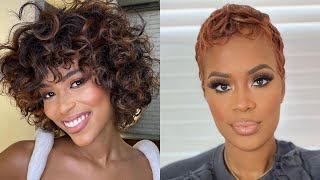Victorian Hairwork Techniques- Table Work
- Posted on 31 January, 2018
- Braids Hairstyles
- By Anonymous
Victorian hair work techniques- table work. Braided hair jewelry.
Learn hairwork techniques, watch extra videos, and join my community on Patreon! https://www.patreon.com/NeverForgotten...
Follow Courtney:
Website: https://www.neverforgottencl.com
Facebook: https://www.facebook.com/NeverForgotte...
Twitter: https://twitter.com/NeverForgetCL
Instagram: https://www.instagram.com/neverforgott...
Credits:
Host: Courtney Lane
Editor: Royce Tucker
Hello and welcome, if you're new to my channel, I have just one question to ask you: do you like my hair? What no not this hair? I mean this hair. If you have been here before, then you've probably guessed it today we're talking about another hair work technique. This hair work technique, we're going to refer to as table work and you can identify table work as braided hair jewelry. Now, as you can see, it's a little more complex than most of the breeds we're putting in our hair as a hairstyle and the way we can achieve this is by working the hair on a table table work work in the Victorian era. They actually had tables made for this purpose. They had braiding tables. These could either stand on the floor and be sitting height or standing height or even be smaller and able to be clamped onto the side of a table. There were even some instances of women just make shifting their own table with whatever materials they had at home. Now the identification of a braiding table is that the surface is flat and smooth and that there is a hole right in the middle of it. Now the hair would actually be counted out into strands and the strands would be affixed to weighted bobbins by using a circular table and braiding from all directions. The hair worker is able to achieve elaborate patterns with a braid that was either perfectly round or square or even twisted. These elaborate braiding techniques are very similar to kumihimo or the ancient art of japanese braiding. It'S for this reason that a lot of modern hair artists use kumihimo tables since victorian hair, braiding tables aren't exactly common anymore breeds could either be left, looser or woven more tightly. There are even some instances where they would weevil a stick through it to give the chain more once the braided chain was finished. They would actually boil the hair with this technique to keep it shape. Ah, yes, boiled hair my favorite once the desired pattern was achieved. There was really no end to the different types of jewelry they made using this table worked hair. I'Ve seen it in necklaces, bracelets brooches rings, watch chains come to think of it. There have even been just a couple two or three Reeves I've seen that included table work. Overall, this tableware jewelry was incredibly popular. It was usually made with the hair of your living loved one for a sentimental token and was very often commissioned out to professional hair workers. Although there's certainly wear companies who would sell you, the jewelry findings to put your own braids in. If you wanted to DIY now, what I find most intriguing about table work is that it's probably the hair work technique that is most often practiced today. This is especially true in these small Swedish village of vamoose. During the Victorian era, the women of BOM who's made a living off of their table, worked hair jewelry and it's still taught and practiced there today. So that is why we raise our glasses to you. The hair workers of BOM who's, the real braiders of the lost art





Comments
Deborah W.: I am so happy that I stumbled across your channel! I have an album of Victorian Hairwork by a distant cousin if mine, dated 1863. This cousin of mine, Catherine, lived in Noble County, Ohio. It contains hair momentos of 109 people. It is all intricately braided, woven, and some even made into a certain macrame style that was popular in the 70’s. Have you come across other works like this? I have been told by antique collectors and historians that this book is very rare because of the large number of people represented in this book as well as the poetry penned under each hair sample. In the book, there is a Civil War Soldier, Solomon Thompson, from an infantry out of Noble Co. Ohio, who “fell in the battle of Locust Grove on November 27th 1863.” Husbands’ and wives’ hair was braided and displayed joined together in the book with a poetic tribute to the couple instead of individually. If the ribbon attached to each one was black, the person had already passed away at the time the book was put together. Otherwise, the ribbon was brightly colored, although some have faded over time. I would love to add some photos with my comment, but am unable to do so.
Malyss: Thank you for your video. I recently took a class on making hair flowers for Victorian hair work. I was thirsty for more things that I could do and did some research online and had already equated Kumihimo weaving with Victorian table work for hair. I felt vindicated when you discussed this artform in your video. :) Yay.
Teigan: Would it be possible to have tutorials on some of these techniques? That's be super helpful! :)
Ragan: Oh my goodness, i was binge-watching your videos and googled you, to see if you happen to sell hairwork and I found out you're in Kansas City? You're literally 15 minutes away from me. That's so cool, I will 100% look into your work soon!
Petunia and Poppy: You should trust that your content is interesting enough on its own- which it is - instead of forcing all the tongue in cheek corny persona stuff.